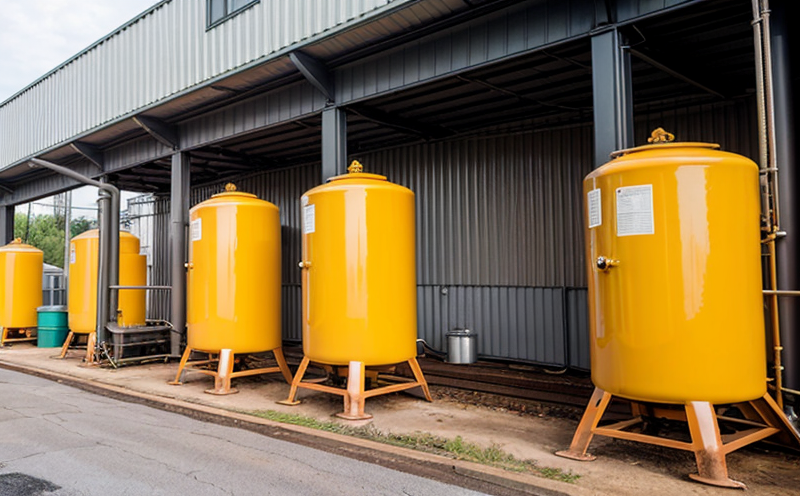ASTM D882 Tensile Property Compliance Testing of Thin Films
The ASTM D882 standard is widely recognized for its role in determining the tensile properties, including elongation at yield and ultimate tensile strength (UTS), of thin films. This testing method is critical for ensuring that materials used in various industrial applications meet specified performance criteria set by regulatory bodies or customer specifications.
In the context of Industrial Manufacturing & Processing, where precision and reliability are paramount, ASTM D882 plays a vital role in quality assurance processes. For instance, thin films are utilized in sectors such as packaging, electronics, and medical devices. Compliance with this standard ensures that manufacturers can confidently assert the integrity and durability of their products.
The test involves creating a specimen from the film to be tested and then stretching it to failure under controlled conditions. The key parameters measured include:
These measurements are crucial for ensuring that the thin film meets the required specifications set by ASTM D882.
Real-World Application
In industrial settings, compliance with ASTM D882 is essential. For example, in packaging materials, tensile properties determine the durability and integrity of the package under various conditions such as temperature changes or mechanical stress during transport. In electronics manufacturing, thin films used in flexible circuits must withstand bending without failure to ensure reliable performance over the product lifecycle.
For R&D engineers working on developing new materials, this test provides critical data that can be used to optimize material properties and improve product design. Compliance with ASTM D882 also facilitates smoother interactions between suppliers and manufacturers, ensuring consistent quality across supply chains.
Instrumentation & Specimen Preparation
The process begins by selecting the appropriate specimen size as per ASTM D882 guidelines. The specimen is then prepared to ensure it meets all dimensional requirements before testing. Once prepared, the specimen is mounted onto a tensile tester capable of applying controlled forces until failure.
During the test, precise control over temperature and humidity levels ensures accurate measurement results. Factors such as crosshead speed are also carefully regulated to simulate real-world conditions under which the material will be used. Post-test analysis involves examining both the mechanical properties obtained from testing and any defects or variations observed in the specimen.
Reporting
The final report generated after conducting ASTM D882 tensile property compliance tests includes detailed information on:
This comprehensive data serves as an essential tool for quality managers, procurement teams, and R&D engineers to make informed decisions regarding material selection and process optimization.
Why It Matters
The importance of ASTM D882 compliance testing extends beyond mere certification; it directly impacts the safety, performance, and longevity of products across various industries. For instance, in the medical device sector, thin films used for packaging must adhere strictly to tensile property specifications to ensure that they can protect sensitive components throughout distribution cycles.
In electronics manufacturing, ensuring compliance with ASTM D882 helps prevent failures due to insufficient mechanical strength during assembly or use. This translates into higher product reliability and customer satisfaction. Additionally, from a regulatory perspective, adherence to these standards demonstrates commitment to quality and safety principles, which can be crucial for market access in international markets.
For companies involved in research and development, complying with ASTM D882 provides valuable insights into material behavior under stress conditions. This knowledge allows them to innovate more effectively while maintaining strict control over product performance.
Applied Standards
| Standard | Description |
|---|---|
| ASTM D882 - 19(2023) | This standard specifies the procedure for determining tensile properties, including elongation at yield and ultimate tensile strength (UTS), of thin films. |
| ISO 527-4:2010 | An international equivalent that provides methods for tension testing plastics. |
| EN ISO 9863-1 | European standard covering the determination of tensile properties of plastic foils and sheets with a thickness up to 5 mm. |
| IEC 60297-2:2014 | Incorporates specific requirements for testing materials used in electrical applications, including thin films. |
The application of these standards ensures consistency and comparability across different regions and industries. By adhering to internationally recognized guidelines like ASTM D882, manufacturers can ensure their products meet global quality benchmarks.
Benefits
Conducting ASTM D882 tensile property compliance testing offers numerous advantages:
Overall, adherence to ASTM D882 contributes significantly towards maintaining high standards of product integrity and performance across diverse industrial applications.





